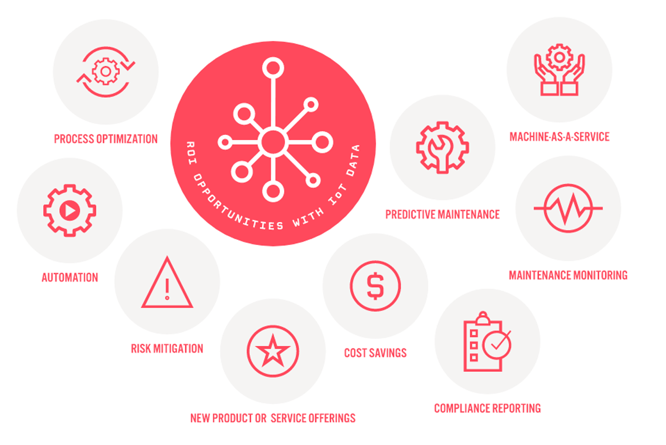In part 1 of this blog series, we looked at key factors that impact IoT initiatives. Now, let’s look at delivering value with built-in IoT.
Want to get started with IoT? Apply strategic rationale: find a key objective in your strategy that IoT can help solve. Then, build from there. IoT benefits can be consumed internally, delivered externally, or both, helping optimize processes within your operations and creating value beyond your customers and their customers. For many organizations, the value of IoT technology is most significant when provided to customers, embedded within a product delivered to customers. Embedded IoT opens the potential for new revenue streams from data-rich connected products as part of the machine-as-a-service business model.

Not surprisingly, the role and value of data, knowledge, and insight in business are growing. Think about it – companies have priceless data within their products. It can either remain there, unused and untapped, or be accessible, targetable, transferable, and made useful and valuable through IoT. Moreover, data and insights collected through IoT devices can be part of the value companies deliver and sell to their customers.
Here’s how data and insight can make a difference to customers and revenues.

Delivering Business Value
Businesses and even entire industries we all admire – are rewarded for identifying and expanding value. Technology plays a role in judgment about value itself, vision, and customer insight.
An interesting example is Kaeser Kompressoren. The German-based company sells air compressors and has done so for nearly a century. Recently, however, they’ve started recognizing their products as assets. The company began installing sensors within its products that monitor conditions and analyze data on their compressors. The resulting wealth of data helped Kaeser Kompressoren implement a predictive maintenance system based on real-world results. They also began selling air as a service on a consumption basis, which opened a new revenue stream. As a result, the company has reduced downtime for its machines by 60 percent and saved its customers roughly $10 million annually in break/fix costs.
Another example is OnStar, an in-vehicle safety and security system owned by General Motors (GM). On-Star enables hands-free calling, turn-by-turn navigation, crash response, and roadside assistance. When the OnStar device is installed in the original equipment, the system also gathers data from the vehicle’s on-board diagnostics system and provides drivers with vehicle health reports. According to Automotive News, GM said that OnStar has 4.2 million paying subscribers and will generate about $2 billion in revenue this year at a margin of more than 70 percent.
Expanding Value Through Innovation
We’ve looked at some of the financial and data-value rewards of innovation. Let's look at what happens when a product or service is expanded beyond its current potential. Better data collection leads to better outcomes for the user, including four key benefits:
- Increased Market Share
- New Revenue Streams
- Improved Customer Retention
- Competitive Advantage
When OEMs consider IoT, they must examine: the potential to expand and enhance the value of industrial equipment — beyond its core functionality -- by building IoT data sets that can be envisioned and acted upon quickly.
In part 3 of this blog, we will look at the various levels of current value and potential new value with IoT.
If you’d like to learn more about how Losant can help your organization meet its IoT application development needs, connect with us here.
| Download To Read the Complete Blog Series (702 KB) |
| Download To Get the Collection of Case Studies in This Series (1.48 MB) |